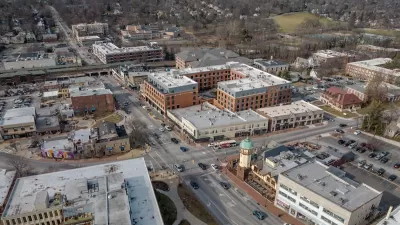In the Minneapolis suburb of St. Louis Park, some residents can't fathom the idea of the city spending $3.1 million to add sidewalks in existing residential neighborhoods.

John Reinan reports on the surprisingly vocal resistance to a $3.1 million project in St. Louis Park, Minnesota, "to install sidewalks and rebuild streets in the Aquila, Minnehaha and Cobblecrest neighborhoods." The St. Louis Park City Council approved the project as a way to reinvent itself "for the millennial generation." In fact, writes Reinan, "Car-oriented postwar suburbs throughout the metro area are looking to reinvent themselves. From Coon Rapids to Apple Valley, long-range suburban plans include sidewalks and trails where cars now reign supreme."
The sidewalk retrofit has sparked outrage among some residents in St. Louis Park, however, who say the city is "on its way to becoming 'an inner-city wasteland' with 'hoodlums standing around on the corner to harass the young women.'" Reinan found those words in an email written to city officials from John Iacono, a resident of the Aquila neighborhood in St. Louis Park.
Reinan reported similar outrage over a sidewalk plan in the nearby town of Edina in 2014.
FULL STORY: Some in St. Louis Park want city to curb its enthusiasm for sidewalks

Manufactured Crisis: Losing the Nation’s Largest Source of Unsubsidized Affordable Housing
Manufactured housing communities have long been an affordable housing option for millions of people living in the U.S., but that affordability is disappearing rapidly. How did we get here?

Americans May Be Stuck — But Why?
Americans are moving a lot less than they once did, and that is a problem. While Yoni Applebaum, in his highly-publicized article Stuck, gets the reasons badly wrong, it's still important to ask: why are we moving so much less than before?

Using Old Oil and Gas Wells for Green Energy Storage
Penn State researchers have found that repurposing abandoned oil and gas wells for geothermal-assisted compressed-air energy storage can boost efficiency, reduce environmental risks, and support clean energy and job transitions.

Updating LA’s Tree Rules Could Bring More Shade to Underserved Neighborhoods
A new USC study finds that relaxing Los Angeles’ outdated tree planting guidelines could significantly expand urban tree canopy and reduce shade disparities in lower-income neighborhoods, though infrastructure investments are also needed.

California's Canal Solar Projects Aim to Conserve Resources and Expand Clean Energy
California’s Project Nexus has begun generating electricity from solar panels installed over irrigation canals, with researchers and state agencies exploring statewide expansion to conserve water and boost clean energy production.

HHS Staff Cuts Gut Energy Assistance Program
The full staff of a federal program that distributes heating and cooling assistance for low-income families was laid off, jeopardizing the program’s operations.
Urban Design for Planners 1: Software Tools
This six-course series explores essential urban design concepts using open source software and equips planners with the tools they need to participate fully in the urban design process.
Planning for Universal Design
Learn the tools for implementing Universal Design in planning regulations.
Heyer Gruel & Associates PA
City of Moreno Valley
Institute for Housing and Urban Development Studies (IHS)
City of Grandview
Harvard GSD Executive Education
Salt Lake City
NYU Wagner Graduate School of Public Service
City of Cambridge, Maryland




























